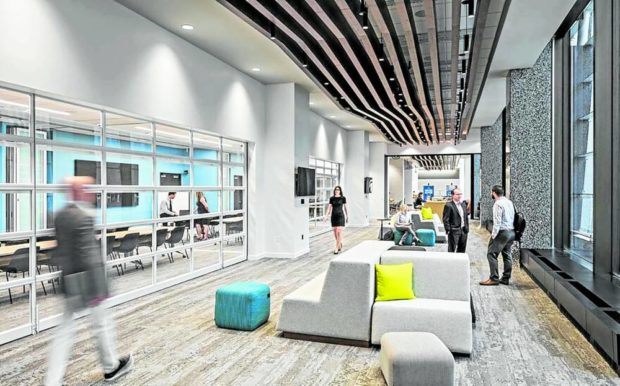The socio-political consequences of the pandemic have allowed new perspectives and standards to emerge. For instance, we are now moving toward the “office of the future,” and there’s a high chance that it will involve cultural shifts due to the portability of work.
We are encountering various platform technologies integrating with physical spaces. These changes and the need to anticipate the next wave of viral spread are making architects rethink workplace evolutions.
Taking notes from hospital design, offices may still adapt foyers or holding areas for disinfection rituals. The entryway would need to manage microbiological transfers through physical inspections and regulations. In addition, isolation rooms, make-shift clinics, and pick-up stations may become a standard inclusion.The rise of “office urbanism”
Instead of simply considering business districts and office parks, we could begin by imagining a new, more inclusive “office urbanism.” The concept would entail integrating technical and infrastructural elements to make offices more adaptive and accessible. It specifically refers to understanding the workplace as a city, a multi-experience location with diverse activities and a gradient from marketing to production.
Some clients are decentralizing headquarters to create satellite offices, which will bring overheads down and workplaces closer to employees. By being closer to suburbs, these micro-offices have lower rental fees and tap into the convenience of having nearby public transit networks. They also have the flexibility to accommodate the “coffee shop feel” wherein people can work for hours with a homey atmosphere. There is a better chance to refurbish these locations with improved natural ventilation and playful amenities.
Humans as naturally social beings
Filipinos typically love being part of a tribe. We appreciate the sense of belongingness and having time to vent out with colleagues. The seclusions associated with work-from-home brought about several cases of psychological breakdowns and depression. Therefore, shared spaces enhance employee well-being.
Various layouts can promote active cooperation or comfortable collaborations, minimizing the physical tension that negatively impacts productivity. Bringing the outdoors inside using living walls, natural materials, patterns, and color palettes can improve well-being by increasing air quality and connecting us to nature. In addition, utilizing outdoor spaces to provide areas for socialization and conversations increases the number of options for managing mental health.
Looking back at tropical designs
The most significant advantage of open floor patterns would be air circulation. Adequate airflow helps lower contamination levels in enclosed spaces. An exemplary manifestation would be to bring back tropical design in new office architecture. Designers should start incorporating the roles of openings, overhangs, shading, and site orientation to bring out the best in passive ventilation. Minimizing the use of HVAC systems with climate control technologies may also bring overhead down.
Rolling with the changing times
As firms around the globe experiment with bringing their employees back to the office, employers and designers alike take immediate action to guarantee that workspaces are both productive and safe when the employees return.
Organizations are seizing this opportunity to break from the past’s inertia by abandoning outdated behaviors and processes. A well-thought return to the office can use this opportunity to rethink their position, improve the talent experience, enhance cooperation and productivity, and cut expenses. Ultimately, the goal of this intervention will be what good firms have always desired: a secure environment in which individuals can enjoy their work, collaborate with their coworkers, and fulfill the organization’s goals.
The author (www.ianfulgar.com) is one of the premium architects in the Philippines who assists local and international clients in enhancing hotels, condominiums, museums, and commercial and mixed-use township developments with distinctive and forward-thinking design specialties for the real estate industry


